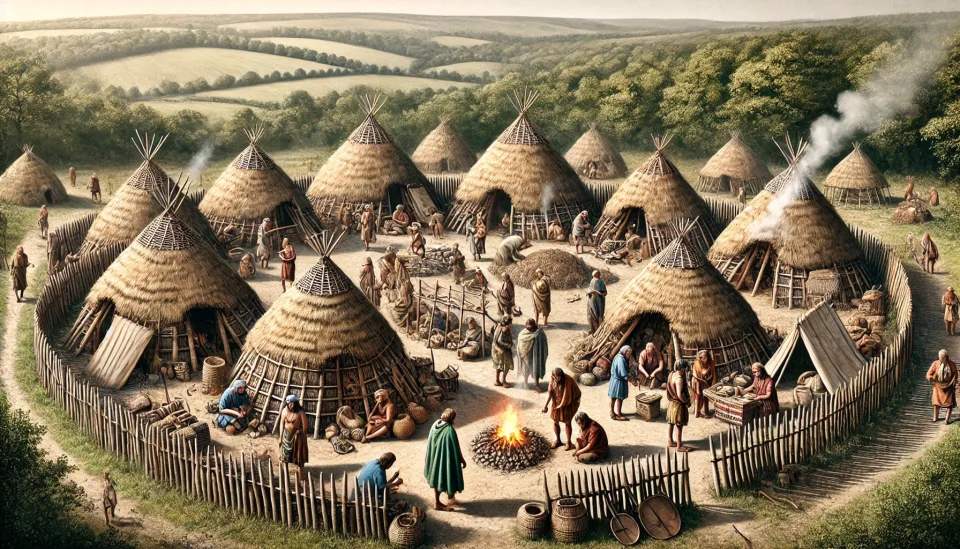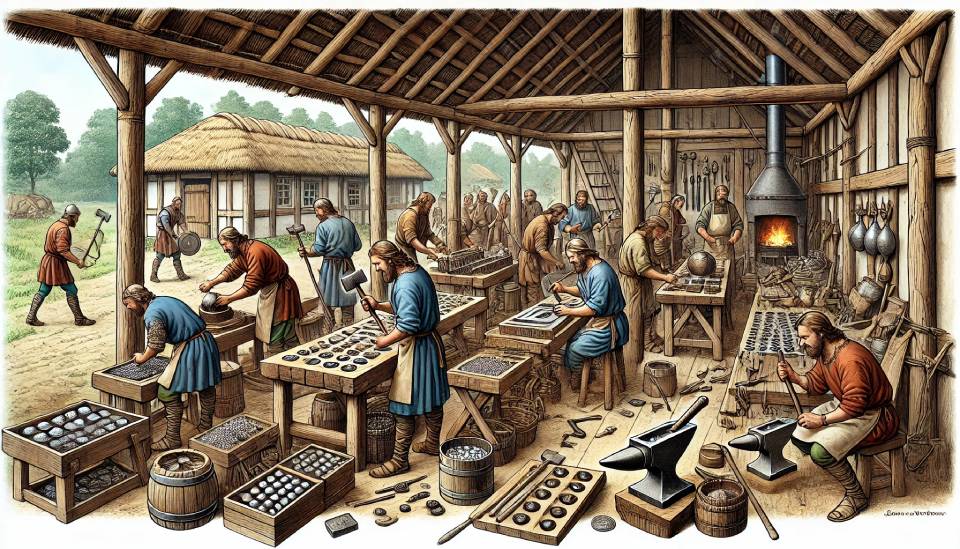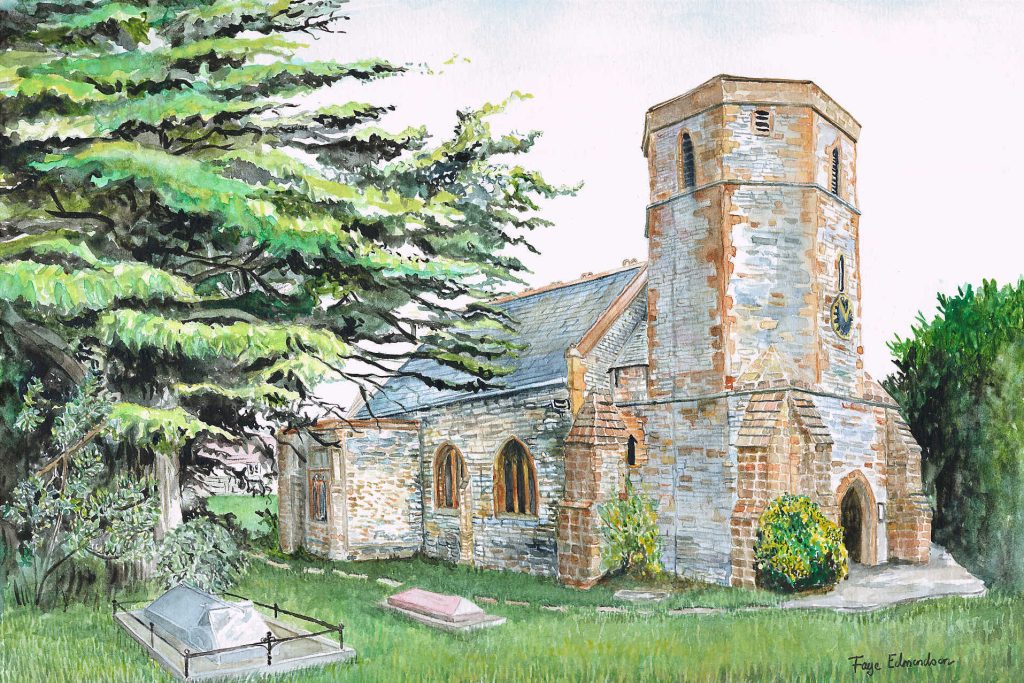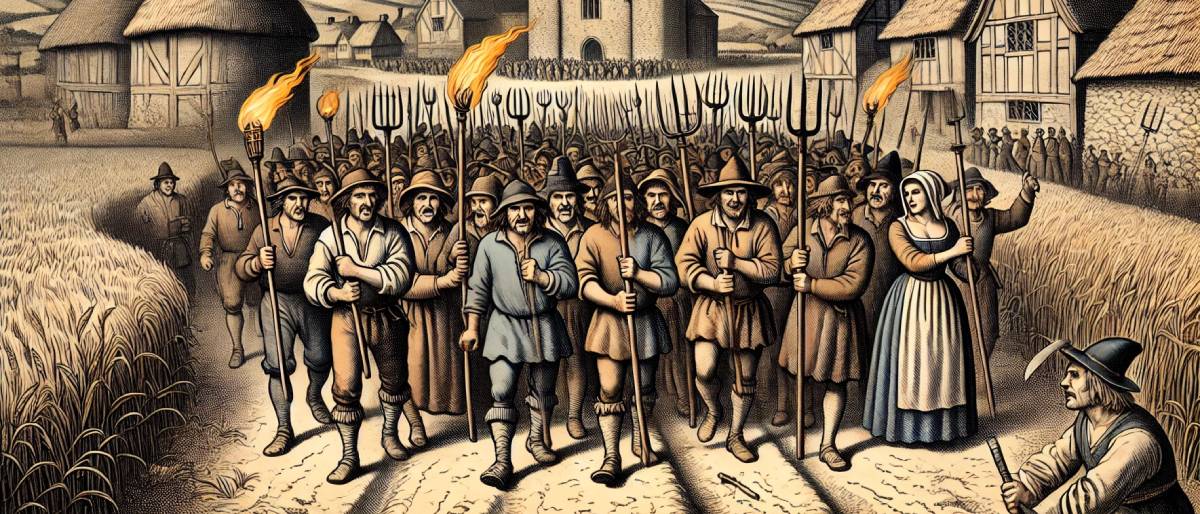An Historic Timeline of Ilchester
Major events affecting Ilchester through the ages. – by Sally Mottram
Ilchester, a town rich in history, has seen significant events and transformations from the Iron Age to modern times. Originally a meeting place for Durotrigan tribes, it became a fortified Roman settlement named Lendinis. Throughout the centuries, Ilchester evolved through Saxon, Norman, and Tudor periods, experiencing economic growth, establishment of religious institutions, and infrastructure developments like toll gates in the Georgian era. The town’s historical significance continued into the Victorian and modern eras, adapting to changing political and social landscapes while retaining its unique heritage.
Iron Age (Before 100 BC)
- Oppidum: Meeting place for Durotrigan tribes.

Roman Period (49 – 60 AD)
- 49 AD: Vespasian leads the 2nd Augusta legion inland from Exeter, subduing tribes and establishing the fort and settlement, naming it Lendinis (Ilchester)
- 60 AD: Ilchester builds a town wall, becoming a secure commercial centre.

Saxon Period
- ‘Burh’: The town wall establishes Ilchester as a self-governing burh within a Royal estate.
- Mint: A mint established in Church Street.

Norman Period
- Four Churches: Built in town; St Mary Major still in use.

Plantagenets (1166 – 1380)
-
- 1166: Henry II establishes the first gaol in Somerset in Ilchester. Henry 11 established system of Gaols and civil courts. Ilchester was chosen as the site for the first gaol in Somerset in 1166.
- Charters: Henry II awarded Ilchester a Charter allocating certain rites e.g., charging tolls across the bridge, holding markets and fairs equal to those held at the time in Winchester. No record remains of the Ilchester charter as Ilchester’s copy was accidentally burnt.
- Richard I: Allows The Merchants Guild to use the star and crescent on their seal.

- Black Friars: A Dominican Friary was established. The ‘Preaching Friars’ were also known as ‘Black Friars’ because of the colour of the habits they wore.
- Edward I established a Parliament and required all boroughs to send two representatives to each sitting.
- An Augustinian nunnery was established.
- Edward III: A second gaol was built on the bridge.
- 1348: Black Death causes a significant death toll and economic distress.
- 1380 – In the reign of Richard II: In the Peasants’ Revolt of 1380, a band of discontents marched to Ilchester, dragged the Governor from the gaol, chopped off his head, stuck it on a pole and carried it back to Bridgewater to display on the town wall.

Tudor Period
- Henry VI: An Alms House Trust was established by Robert Veal, a Somerset Lawyer, and ‘generously endowed’.
- 1538: Dissolution of the Dominican friary.
- 1550’s: Queen Mary and her husband, Phillip of Spain incorporated the borough, awarding a new and detailed charter giving the rump of lands, rented by Free Farm from the Crown since Middle Ages, to the corporation.
- Elizabethan Reforms brought about the building of a House of Correction and a third gaol, on the north bank of the river – the River Yeo. The parish boundary was altered to include them in Ilchester.

Stuart Period
- 1640’s: Charles I recruits for his army during the English Civil War. Charles I slept 4 nights in the home of William Dawe – a local brewer – whilst recruiting for his army during the English civil war. The house stood on land which had once been the Dominican Friary.
Georgian Period
- Under George II: In 1750, the Turnpike Act was passed, requiring the repair and upkeep of roads. Trusts were established setting up gates across roads which required a toll to pass through. Ilchester was at first covered by the Shepton Mallet Trust.
- George III: In 1800, an Ilchester Trust was established.
At this time Ilchester had degenerated into a ‘Rotten Borough’, with William Manners and Lord Darlington out-bidding each other to get their candidates elected as members of parliament. - 1832: Reform Act removes Ilchester’s borough status.

Ilchester during Victorian times
- During the 1840’s, an attempt was made to relieve the poverty experienced locally when rich and influential men abandoned Ilchester following it’s down-grading from borough status. Ilchester became a coaching town, and Castle Farm a coaching inn. However, it was short-lived as the railway company laid its line by-passing Ilchester. The coach was replaced by the train.
- 1843: Closure and demolition of Ilchester Gaol. A Royal Commission investigation into conditions at Ilchester Gaol, brought about its closure, after complaints by Henry Hunt. He had been gaoled in 1820 for two and a half years, having been arrested for his part in the demonstrations in Manchester resulting in the Peterloo massacre. The Governor, William Bridle was found guilty of one of the 14 accusations made by Hunt. The conditions at the gaol, due to its situation on the banks of the river and low lying land, were found to be unacceptable. The jail was closed in 1843, demolished and the material sold off. The houses in Alms House Lane were built with stones from the jail.
- 1889 Ilchester Town Trust was established to manage assets remaining from the Borough. Ilchester Town Trust was established on 13th September 1889 by the dissolution of the Bailiff and Burgesses of Ilchester under the Municipal Corporation Act 1883, Charter of Queen Victoria. The Trust was commissioned to repair and maintain the Town Hall, contribute to the lighting of the village streets, and contribute to any purpose for the public benefit of the inhabitants of Ilchester.
Modern Times
- George V: The Alms House was closed and its inhabitants boarded-out in the community. They were given a pension.
- George VI era: With the threat of war, suitable land was sought for an air station for the Naval Fleet Air Arm. Land on the outskirts of Ilchester was found to be suitable and HMS Heron was built. The influx of new blood, and eventually families, brought a need to provide services and was a great boon for Ilchester.
- World War II: Establishment of HMS Heron naval air station.
- Community Changes: Influx of new families and services development.
To be continued…
Take a look in our shop at our Heritage tee-shirts, especially designed with the Ilchester Insignia…

